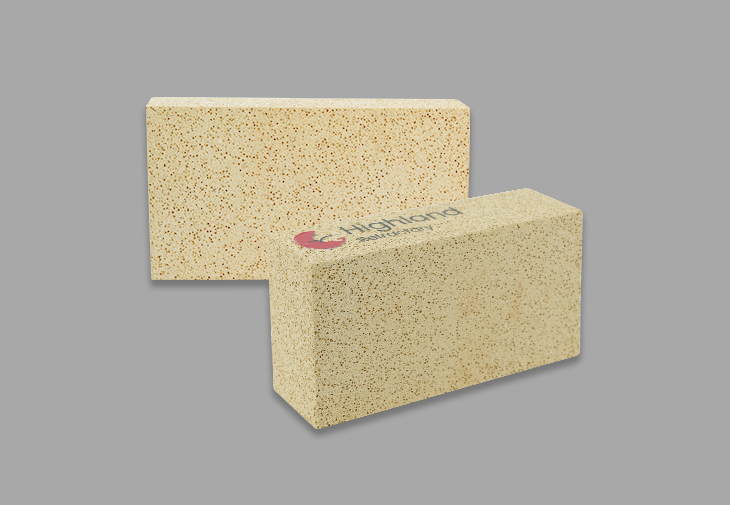
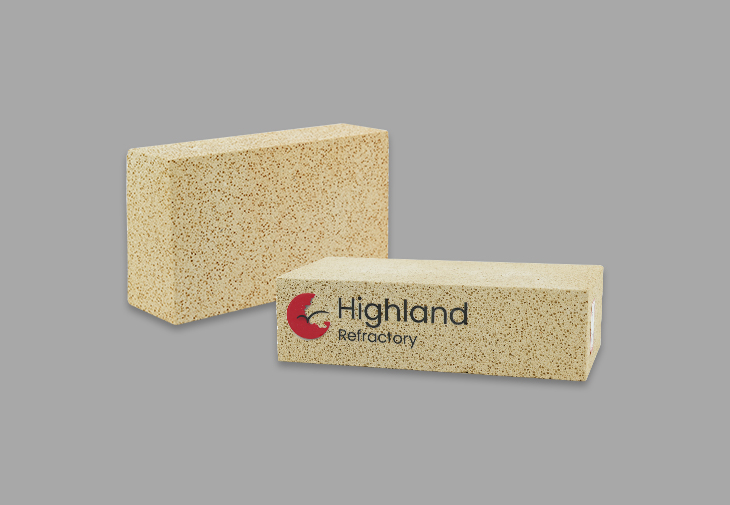
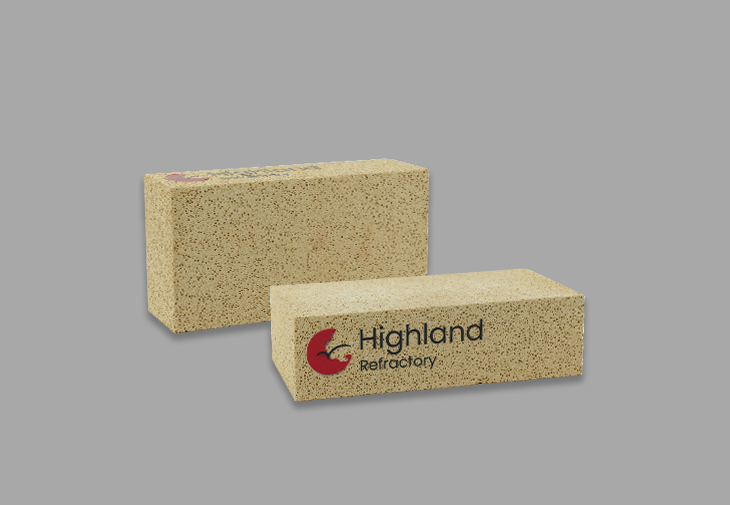



High alumina poly light bricks are made of special high alumina materials as the main raw materials, supplemented by appropriate additives and produced by poly light burning loss method. They have the advantages of high strength, good thermal stability, small change of heavy burning fiber, and small thermal conductivity. The use temperature is below 1350°C.
(1) Low thermal conductivity: Especially at high temperatures, the thermal conductivity is low and the thermal insulation performance is good.
(2)Good thermal shock resistance: Within the operating temperature range, the brick does not deform or peel off.
(3)According to different uses, choose reasonable mechanical strength to make the light spider have the best performance.
(4)Compared with similar lightweight refractory bricks, the higher load softening temperature and smaller reburning change rate have higher operating temperature, longer life and safer.
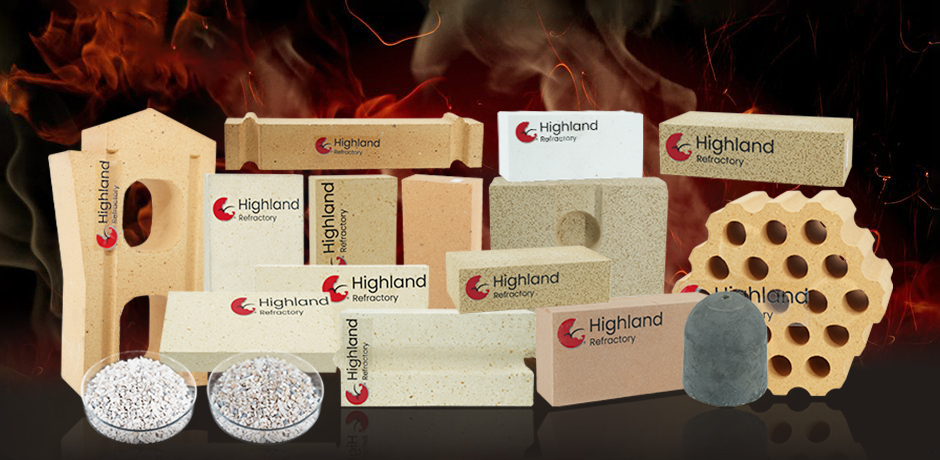
(1) Insulation layer
(2) Heat preservation layer
(3) Ceramic tunnel kiln
(4) Roller kiln
(5) Shuttle kiln
(6) Heating furnace
(7) Coking furnace
(8) Other thermal equipment
(9) Lining material for heat treatment furnace
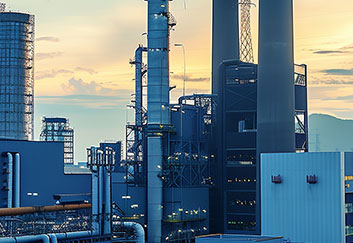
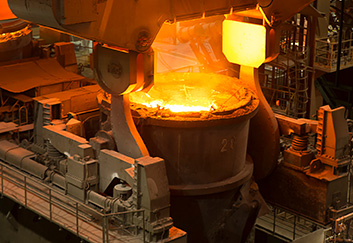
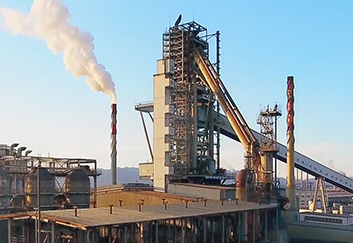
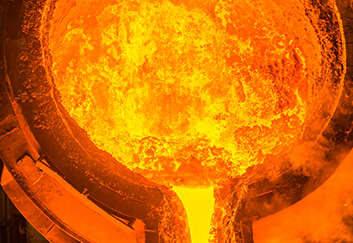
|
Physical and chemical indicators |
|||||
|
Item |
LG-1.0 |
LG-0.9 |
LG-0.8 |
LG-0.9 |
LG-0.6 |
|
Al2O3(%) not less than |
42 |
42 |
42 |
42 |
42 |
|
Fe2O3(%) not greater than |
2.0 |
2.0 |
2.0 |
2.0 |
2.0 |
|
Volume density g/cm3 |
1.0 |
0.9 |
0.8 |
0.7 |
0.6 |
|
Compressive strength at room temperature MPa not less than |
40 |
35 |
30 |
25 |
20 |
|
Experimental temperature at which the reburning line changes by no more than 2% |
1400 |
1400 |
1400 |
1350 |
1350 |
|
Thermal conductivity W/m.k (350±25℃) not greater than |
0.50 |
0.45 |
0.35 |
0.35 |
0.3 |
Highland Refractory classifies High Alumina Lightweight Bricks by Al₂O₃ content, function, and manufacturing process to match diverse high-temperature needs:
By Al₂O₃ content:
LZ-55 Lightweight Bricks (Al₂O₃ ≥55%): Refractoriness 1650℃, ideal for cement kiln insulation layers.
LZ-70 Lightweight Bricks (Al₂O₃ ≥70%): Resists 1750℃, suitable for steel mill hot blast stove linings.
LZ-80 Lightweight Bricks (Al₂O₃ ≥80%): Ultra-high temperature resistance (1790℃), used in glass furnace regenerators.
Functional types:
Insulating High Alumina Lightweight Bricks: Low thermal conductivity (0.25-0.5W/(m·K)), for energy-saving scenarios.
High-strength, high-alumina lightweight bricks: room temperature compressive strength ≥15MPa, suitable for load-bearing and heat-insulating parts (such as furnace top).
Custom types: Supports special shapes (arc, wedge) for non-standard equipment, with molds ready in 3-5 days for small batches.
Highland’s High Alumina Lightweight Bricks stand out for lightweight, insulation, and high-temperature performance, solving core industrial pain points:
Ultra-light & load-reducing: Density 0.6-1.2g/cm³ (50-60% lighter than regular high alumina bricks), reducing structural load of kilns/furnaces by 40%.
Superb insulation: Thermal conductivity 0.25-0.5W/(m·K) at 800℃, cutting heat loss by 35% and saving energy costs annually.
High temperature resistance: Refractoriness 1650-1790℃, maintains stability in long-term 1200-1600℃ environments (e.g., steel ladle insulation).
Strong thermal shock resistance: Permanent linear change ≤±0.5% after 1100℃ thermal cycles, no cracking under rapid temp fluctuations.
With “lightweight + high insulation + high temperature resistance”, our bricks are widely used in key high-temperature sectors:
Steel industry: Hot blast stove insulation layers, blast furnace top insulation—reduces heat loss and extends equipment service life by 1.5 years.
Cement industry: Rotary kiln transition zone insulation, cement clinker cooler linings—resists thermal shock and saves 25% fuel consumption.
Glass industry: Glass furnace regenerator insulation, molten glass channel linings—maintains stable temperature and improves glass quality.
Petrochemical industry: Industrial furnace insulation layers, reactor thermal insulation—resists acidic/alkaline corrosion and high temperatures.
Non-ferrous metals industry: Aluminum electrolytic cell insulation, copper smelting furnace linings—lightweight design eases equipment maintenance.
| Aspect | High Alumina Lightweight Bricks (Highland) | Fire Clay Bricks (Highland) |
| Core Composition | Al₂O₃ ≥55-80% (neutral/weakly basic) | Al₂O₃ 30-48% (weakly acidic) |
| Temperature Resistance | 1650-1790℃ (ultra-high temp adaptable) | 1580-1750℃ (medium-temp ideal) |
| Insulation Performance | Thermal conductivity 0.25-0.5W/(m·K) | Thermal conductivity 0.6-1.0W/(m·K) |
| Weight & Load | Density 0.6-1.2g/cm³ (load-reducing) | Density 2.0-2.1g/cm³ (structural support) |
| Suitable Scenarios | High-temp insulation (e.g., steel/glass) | Medium-temp acid-resistant scenes (e.g., chemical reactors) |
Choose Highland for 3 core advantages that outperform peers:
Professional Strength: 30+ years in refractory R&D, 2 production bases, annual output of 15,000 tons of High Alumina Lightweight Bricks—meets large-order demands.
Strict Quality Control: ISO 9001/CE certified, 3-stage QC (raw material screening → small-batch sintering test → full inspection), each batch with detailed test reports.
Global Trust: Serves 1500+ customers in 100+ countries (e.g., Korean steel mills, European cement plants), with a 70%+ repurchase rate for High Alumina Lightweight Bricks.
Highland creates extra value for your high-temperature projects:
Customization Flexibility: Supports size/shape/density customization (e.g., thin bricks for pipes, arc bricks for kiln corners), with 10-15 day delivery for custom orders.
Cost & Efficiency Optimization: Localized high-purity bauxite procurement reduces raw material costs by 20%; bulk purchases enjoy 5-10% discounts.
Full-Service Support: Provides 24/7 technical guidance (e.g., installation advice for furnace insulation), and overseas customers get video remote debugging.
Reliable Logistics: Cooperates with Qingdao/Shanghai ports, uses shock-absorbent packaging (transport damage rate ≤0.8%), and offers real-time logistics tracking.

Answer: Highland’s High Alumina Lightweight Bricks withstand 1650–1790℃ (LZ-55: 1650℃, LZ-80: 1790℃) and work stably long-term at 1200–1600℃. For example, LZ-70 bricks (Al₂O₃ ≥70%) last 3–5 years in steel mill hot blast stoves without cracking.
Answer: Yes. We customize:
Shapes: Arc, wedge (molds ready in 3–5 days, small batches ≥50 pieces).
Density: 0.6–1.2g/cm³ (0.8g/cm³ for insulation, 1.2g/cm³ for load-bearing parts).
Performance: Adjust Al₂O₃ or add anti-corrosion additives for harsh environments.
Answer: Key steps:
Pre-soak bricks 10–15 mins; clean equipment surface.
Use high-alumina mortar (Al₂O₃ ≥60%), joint width 2–3mm.
Cure 24hrs at 80–120℃ before heating.
We provide video guidance (overseas) & manuals; tech team responds in 24hrs.
Answer: Our bricks outperform in:
Temp resistance: 1650–1790℃ (vs. mullite’s 1600℃ max).
Anti-corrosion: Resists alkaline slag (cement kilns).
Density range: 0.6–1.2g/cm³ (vs. mullite’s 0.8–1.0g/cm³).
Answer: Certifications: ISO 9001, CE, SGS.
3-stage QC: Raw material screening → small-batch tests → full inspection (test report provided).
Verify via free samples (5–10 pieces) or industry case studies (e.g., European glass plant’s 4-year use).
Mullite lightweight insulation brick is a high-quality insulation material.
Corundum - mullite brick refers to high purity or pure raw materials made of refractory products.
Low creep clay bricks have a low creep rate in high temperature environments and can maintain good shape and dimensional stability for a long time.
Silica-molybdenum bricks have high resistance to chemical erosion and excellent wear resistance, and are the preferred material for the transition zone and preheating zone of large cement kilns.
High alumina fine powder is a powder material with alumina (Al2O3) as the main component.
Refractory cement, also known as aluminate cement, is a fire-resistant hydraulic cementitious material.